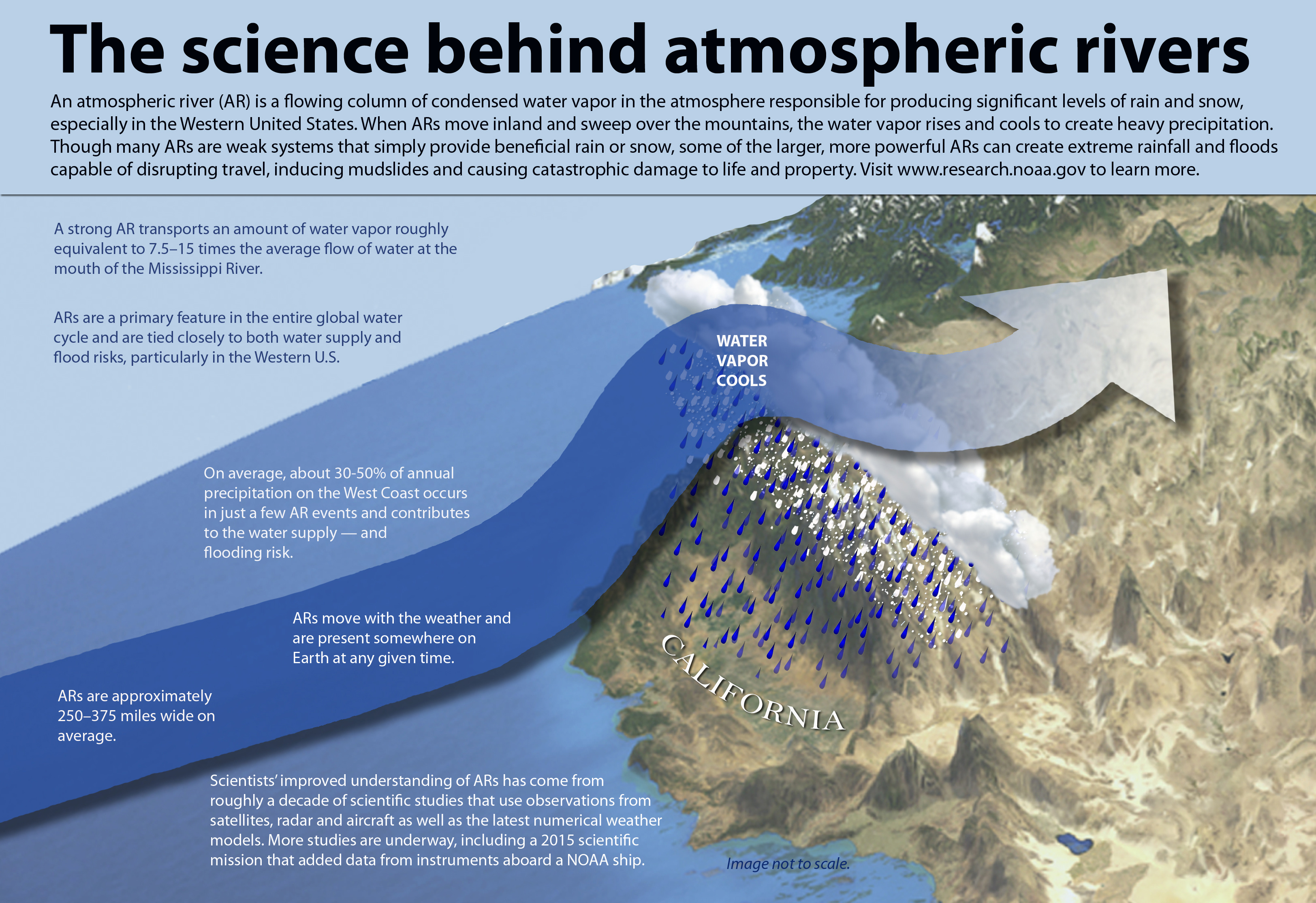Important Facts For Prelims
Atmospheric Rivers
- 28 Mar 2023
- 2 min read
Why in News?
California has experienced an exceptionally wet winter with 11 atmospheric rivers battering the state since late December 2022.
What are Atmospheric Rivers?
- About:
- Atmospheric rivers are relatively long, narrow regions in the atmosphere – like rivers in the sky – that transport most of the water vapor outside of the tropics.
- One well-known atmospheric river called the “Pineapple Express” picks up warm, moist air near Hawaii.
- When the Pineapple Express hits land in the Western United States and Canada, it can cause heavy rain and snow. In California, it can cause up to 5 inches of rain in a day.
- Atmospheric rivers typically occur in the extratropical North Pacific/Atlantic, southeastern Pacific, and South Atlantic oceans often making landfall on the west coasts of North and South America. Other regions that experience atmospheric river landfalls include Greenland, Antarctica, and the south-central United States.
- Atmospheric rivers are relatively long, narrow regions in the atmosphere – like rivers in the sky – that transport most of the water vapor outside of the tropics.
- Formation:
- Atmospheric rivers usually begin over tropical regions. Warm temperatures cause ocean water to evaporate and rise into the atmosphere. Strong winds help to carry the water vapor through the atmosphere.
- As atmospheric rivers move over land, the water vapor rises up farther into the atmosphere. It then cools into water droplets, which fall as precipitation.
- Impacts:
- Heavy rainfall associated with ARs can cause flooding, landslides, and mudslides.
- They can also lead to water supply disruption, and develop drought-like conditions.
- Heavy rainfall associated with ARs can cause flooding, landslides, and mudslides.
- Significance:
- Not all atmospheric rivers cause damage; most are weak systems that often provide beneficial rain or snow that is crucial to the water supply.
- Climate Change:
- Climate change is expected to increase the frequency and intensity of ARs in some regions of the world, particularly in the mid-latitudes.
- This could have significant implications for water resources management, flood control, and other areas of public policy.
- Climate change is expected to increase the frequency and intensity of ARs in some regions of the world, particularly in the mid-latitudes.





